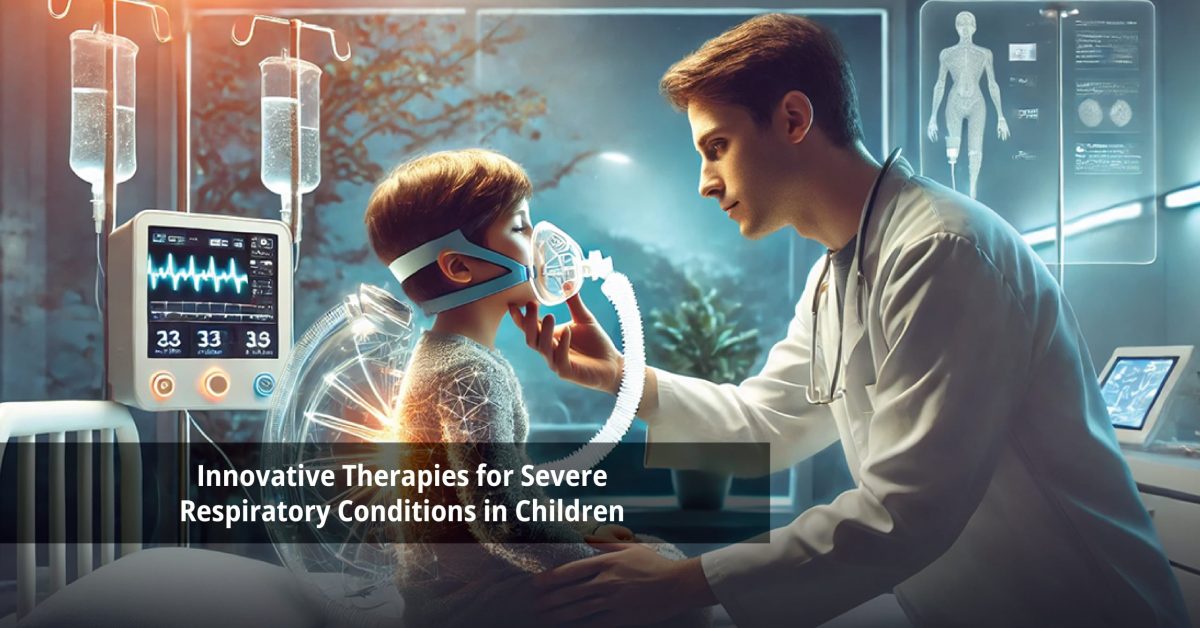New Advances in the Treatment of Asthma and Bronchiolitis.
This management of asthma and bronchiolitis in kids has greatly benefited the introduction of new therapeutic alternatives. For example, the efficacy of MDIs with spacers compared to nebulizers proves that MDIs can be at least as effective as, if not more effective than, nebulizers in delivering beta-agonists for acute asthma. This is especially true given that spacers are cheaper and less cumbersome to apply, especially in mass distribution. Additionally, the contribution of a number of inhaled corticosteroids in the treatment of acute asthma after discharge from the emergency department has been illustrated through research results that show that high doses of inhaled corticosteroids are as effective as oral corticosteroids in mild asthmatic cases.
Respiratory Syncytial Virus (RSV) and New Treatments
Therefore, combating this viral health hazard through chemotherapies and other therapeutic options for bronchiolitis in children can turn out to be quite challenging. Also, the current fight against RSV is complicated by the fact that it’s poorly understood in terms of etiology. Immunoglobulin treatments, which are administered mainly for the prevention of RSV infection, have also been considered for the treatment of severe RSV infections. Even though present studies for RSV-specific immunoglobulin administration are not proven to be effective for hospitalized children greatly, there is a current effort for further search for more effective RSV-specific immunoglobulin formulations along with highly selective therapy for children. Also, new antiviral agents and vaccines have been said to be in the pipeline to help lower the existing incidence and impact of RSV-related respiratory diseases.
Directions and Prospective for Respiratory Therapy in Children
Thus, the advancement of pediatric respiratory care will depend on further research and the application of new techniques. The concept of trio genomics, that is, registering the tendencies of diseases’ development depending on such genes as MUC5AC, MUC5B, and CHRNA3, without which it is impossible to manage severe respiratory conditions, will fundamentally change traditional methods of pharmacological therapy and preventive measures. Also, the extension of technologies in the fields of biotechnology and pharmacology will enable researchers to discover improved drugs and therapeutic approaches that would target the pathophysiology of respiratory diseases more efficiently.
Also, the application of artificial intelligence (AI) and machine learning in clinical diagnosis and patient management should promote the improvement of diagnosis as well as the process of managing patients’ conditions. By using AI algorithms, it becomes easier to look at a large amount of clinical data and establish relationships between various variables and patient outcomes to help healthcare providers. The use of these technologies in conjunction with the steady progress of the development of novel treatments for these severe respiratory ailments will undeniably enhance the outcomes and the general well-being of children with such diseases.
Conclusion
New therapies for severe pulmonary disorders in children are not stagnant since new ideas and results of clinical practice are being developed. Koumbi and Chatzi present several innovations that take place in pediatric populations and could potentially help young patients experience better conditions or, in the worst-case scenario, avoid exacerbations when managed by experts. As ongoing and chronic advancements continue to be advanced in the particular field of pediatric respiratory care, it is crucial to be informed of the current emergencies and to incorporate relevant ones into practice. In this way, healthcare providers can be assured that children with severe respiratory diseases are given maximum care, thus optimizing morbidity and mortality as well as the quality of life of those little patients.
References
- Rodrigo GJ. Advances in acute asthma. Curr Opin Pulm Med. 2015 Jan;21(1):22-6. doi: 10.1097/MCP.0000000000000123. PMID: 25405669.
- Ralston, S.L., Lieberthal, A.S., Meissner, H.C., Alverson, B.K., Baley, J.E., Gadomski, A.M., Johnson, D.W., Light, M.J., Maraqa, N.F., Mendonca, E.A. and Phelan, K.J., 2014. Clinical practice guideline: the diagnosis, management, and prevention of bronchiolitis. Pediatrics, 134(5), pp.e1474-e1502.
- Cates CJ, Welsh EJ, Rowe BH. Holding chambers (spacers) versus nebulisers for beta-agonist treatment of acute asthma. Cochrane Database Syst Rev. 2013 Sep 13;2013(9):CD000052. doi: 10.1002/14651858.CD000052.pub3. PMID: 24037768; PMCID: PMC7032675.
- Hall CB, Weinberg GA, Blumkin AK, Edwards KM, Staat MA, Schultz AF, Poehling KA, Szilagyi PG, Griffin MR, Williams JV, Zhu Y, Grijalva CG, Prill MM, Iwane MK. Respiratory syncytial virus-associated hospitalizations among children less than 24 months of age. Pediatrics. 2013 Aug;132(2):e341-8. doi: 10.1542/peds.2013-0303. Epub 2013 Jul 22. PMID: 23878043.
- Berger JT, Carcillo JA, Shanley TP, Wessel DL, Clark A, Holubkov R, Meert KL, Newth CJ, Berg RA, Heidemann S, Harrison R, Pollack M, Dalton H, Harvill E, Karanikas A, Liu T, Burr JS, Doctor A, Dean JM, Jenkins TL, Nicholson CE; Eunice Kennedy Shriver National Institute of Child Health and Human Development (NICHD) Collaborative Pediatric Critical Care Research Network (CPCCRN). Critical pertussis illness in children: a multicenter prospective cohort study. Pediatr Crit Care Med. 2013 May;14(4):356-65. doi: 10.1097/PCC.0b013e31828a70fe. PMID: 23548960; PMCID: PMC3885763.
- Shah VP, Tunik MG, Tsung JW. Prospective evaluation of point-of-care ultrasonography for the diagnosis of pneumonia in children and young adults. JAMA Pediatr. 2013 Feb;167(2):119-25. doi: 10.1001/2013.jamapediatrics.107. PMID: 23229753.
